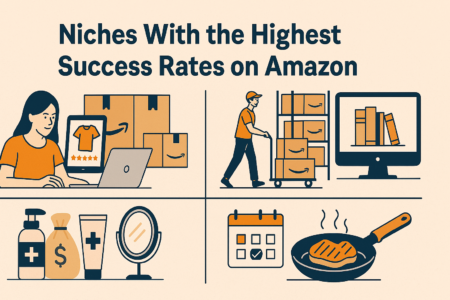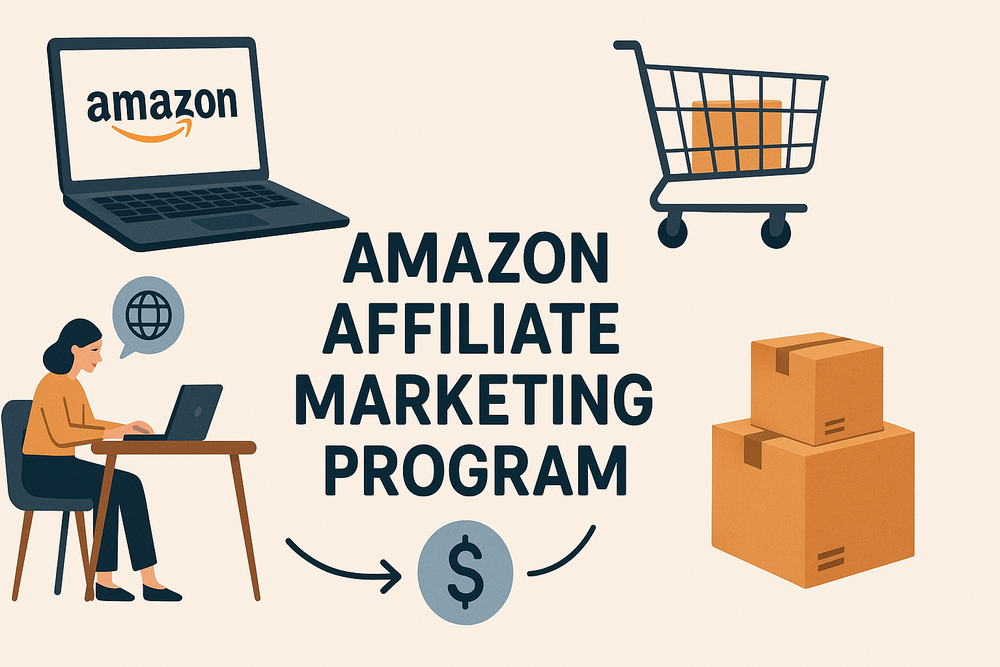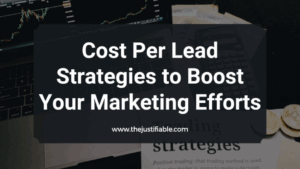Table of Contents
Is the amazon affiliate marketing program really as profitable as it seems? How many people actually succeed with it—and how long does it take to see results? If you’ve ever wondered why some affiliates thrive while others barely make a few dollars, you’re not alone.
The truth is, there’s a lot of hype and even more confusion surrounding affiliate marketing on Amazon. Some claim it’s passive income gold; others say it’s not worth the effort. This article breaks down what the success rates really look like, what holds people back, and what strategies actually make a difference. If you’re thinking about joining or trying to level up your affiliate earnings, you’ll want to see what’s working—and what’s not.
Let’s dig into the numbers, the mistakes, and the proven paths that lead to real results.
Understanding How the Amazon Affiliate Program Works
Before diving into success rates, it helps to understand how the amazon affiliate marketing program is actually structured. From sign-up to commission payments, each part of the process plays a role in whether or not affiliates succeed.
The Basic Structure of Amazon’s Affiliate Program
The amazon affiliate marketing program, officially called Amazon Associates, is pretty straightforward. You sign up, get access to custom affiliate links for millions of products on Amazon, and earn a small commission every time someone makes a purchase through your link.
What catches many people off guard is that you’re not just paid for the product you recommend—you can also earn from any qualifying item the buyer adds to their cart after clicking your link. That sounds promising, right? But here’s the catch: the cookie duration is only 24 hours. That means if your visitor doesn’t buy within a day, you miss the commission. Unlike some other affiliate programs that offer 30-day windows, Amazon’s tight timeframe can be frustrating for new affiliates.
Another important thing to know is that your success hinges on more than just placing links. Amazon doesn’t allow email promotions or paid search ads that use their brand name, and they’re quick to remove violators from the program. So, the structure gives a lot of flexibility—but also comes with strict limits that can trip you up if you’re not paying close attention.
Who Can Join and What Are the Eligibility Requirements?
Almost anyone with a website, blog, YouTube channel, or social following can apply to the program. That’s part of the appeal. You don’t need to be a pro marketer to get started. But what Amazon cares about is your ability to drive actual sales within a set timeframe.
You have 180 days from the time you join to generate at least three qualified sales. If you don’t hit that target, your account gets deactivated. You can reapply, but it’s a reminder that Amazon wants affiliates who can perform, not just sign up and hope for the best.
Also, you’ll need to clearly disclose your affiliate relationship on your site. That means having a disclaimer that lets visitors know you may earn a commission from products you link to. Amazon is strict about this, and skipping it could get your account suspended.
From what I’ve seen, people often underestimate this part. They think just having a blog is enough. But if your content doesn’t generate traffic or motivate people to buy, the affiliate relationship doesn’t last long.
How Commissions Are Calculated and Paid Out
Here’s where the amazon affiliate marketing program gets a little tricky. Commission rates vary based on product category. For example, luxury beauty products might earn you up to 10%, while video game consoles only bring in around 1%. The average tends to hover between 1% and 4% for most categories.
Let me break it down with an example: If someone clicks your affiliate link and buys a $500 treadmill, and the category offers a 3% commission, you’ll earn $15. That’s decent for a single sale. But if your content is promoting books or electronics, you might earn just a few cents to a couple of dollars per sale.
Amazon pays commissions about 60 days after the end of the month in which the purchase was made. You can choose to be paid via direct deposit, Amazon gift card, or check. It’s a reliable system, but the delay can feel long when you’re just starting out and trying to gain momentum.
One thing to remember: returns can cancel out your commissions. If someone buys through your link but returns the item later, that commission is clawed back. That’s why seasoned affiliates often steer toward categories with lower return rates.
Key Policies That Impact Your Affiliate Success
Amazon has very specific rules—and they’re not shy about enforcing them. Violating even one policy can result in a permanent ban from the program. That’s a scary thought when you’ve worked hard to build up traffic and trust.
For example, you’re not allowed to use affiliate links in emails or PDF downloads. You also can’t cloak links or redirect users in misleading ways. Every link must be visible and clearly identifiable as going to Amazon. Another common pitfall? Using Amazon’s product images without proper formatting. You’re only allowed to use these through their API or SiteStripe tool.
I suggest reviewing the Operating Agreement carefully before you even add your first link. It’s a long read, but skipping it can cost you. I’ve heard from affiliates who lost their accounts for using links in private Facebook groups—something they didn’t even realize was against the rules.
The takeaway? Success isn’t just about driving clicks and conversions. It’s also about staying compliant, up to date, and building trust in a way that aligns with Amazon’s guidelines.
Expert Tip: Treat the amazon affiliate marketing program like a real business. Take time to learn the rules, understand how commissions work, and make sure your content is built to convert—not just to rank. That mindset shift alone can help you stay in the game long enough to see real results.
Realistic Success Rates in Amazon Affiliate Marketing

If you’re considering the amazon affiliate marketing program, it’s worth asking—what kind of results are people actually seeing? Let’s break down real numbers, common roadblocks, and what separates success from disappointment.
What Data Shows About Average Affiliate Earnings
There’s a lot of noise online about how much affiliates earn, but the data tells a clearer story. According to Influencer Marketing Hub’s 2024 survey, around 48% of Amazon affiliates earn under $100 per month. Roughly 18% report earnings between $100–$500 monthly, while fewer than 5% make over $2,500 consistently.
These numbers show that while success is possible, it’s not guaranteed—and certainly not fast. Most affiliates don’t quit their day jobs on Amazon income alone. It’s often a stepping stone, not the final goal.
The big takeaway? If you’re diving into the amazon affiliate marketing program thinking it’s quick money, you’re likely in for a wake-up call. But if you treat it like a long-term project and focus on growing traffic and trust, those small commissions can add up over time.
And one more thing—commissions aren’t your only reward. For many creators, the program provides an entry point to learn SEO, content marketing, and how people buy online. That learning curve can become a launchpad for more lucrative opportunities later.
Why Most Beginners Struggle to Earn Consistent Income
The biggest reason new affiliates struggle isn’t a lack of effort—it’s a lack of strategy. Most beginners choose products randomly, write thin content, and hope that a few links will lead to conversions. When it doesn’t happen, frustration sets in.
Traffic is a huge issue. Without steady traffic, even the best-written content won’t perform. And getting that traffic takes time. Google doesn’t reward new sites right away, so ranking for product-related keywords can feel painfully slow in the beginning.
Another challenge is understanding buyer intent. A blog post titled “Best Home Office Desks” performs very differently from one called “How to Organize Your Desk.” Only one of those is tied directly to a purchasing mindset. That’s a small but important distinction, and many new affiliates miss it.
Some also underestimate how much trust matters. If your content reads like a sales pitch, people will bounce. But if you offer real insights—like comparing features or sharing your honest opinion—readers are more likely to click and buy.
Factors That Separate Successful Affiliates from the Rest
Successful affiliates aren’t always tech geniuses or full-time marketers. But they do a few things differently that make a big impact over time.
They choose their niche with care. Rather than jumping into saturated categories like tech or fashion, they often go for underserved or evergreen niches where there’s less competition and more room to rank. For example, a blog focused on gardening tools or ergonomic home office gear can do surprisingly well.
They also build topic clusters around core themes, which helps with SEO and audience engagement. Instead of one post about “best dog leashes,” they create an entire hub of related posts—how to choose a leash, leash training tips, product comparisons. This keeps readers on-site longer and improves relevance in search engines.
From what I’ve seen, the top performers also track everything. They use tools like Google Search Console and Amazon’s affiliate dashboard to understand which pages convert and which don’t. They test different formats—tables, buttons, images—to see what improves click-through rates. And they revise underperforming posts regularly instead of setting them and forgetting them.
It’s less about doing everything perfectly and more about doing the right things consistently. That kind of discipline is what really sets winners apart in the amazon affiliate marketing program.
How Long It Typically Takes to See Results
This is the question everyone wants answered—how soon can you expect to earn money? The short version: don’t expect meaningful income in your first few months. In most cases, it takes 6–12 months to gain traction, especially if you’re starting from scratch with a brand-new site.
That time frame can be frustrating, especially if you’re putting in a lot of effort without seeing immediate returns. But it’s completely normal. Search engines need time to crawl, index, and rank your pages. During that window, many affiliates give up—often right before their content starts gaining momentum.
I suggest treating the first three months as your building phase. Focus on creating quality content, learning about your niche, and testing what works. Months four through six are where you’ll start to see traffic build, and from there, small commissions often follow. If you’re consistent, things usually snowball from month six onward.
That’s not to say everyone will follow the same path. If you already have an audience—like an email list or social media following—you might earn sooner. But for most of us, it takes patience. The affiliates who succeed aren’t always the smartest or most technical. They’re the ones who stuck around long enough to get results.
Expert Tip: Don’t focus on earnings in the first few months. Focus on publishing content that answers real buyer questions. The traffic and commissions will come as a byproduct of trust and consistency.
Common Mistakes That Sabotage Affiliate Success
The amazon affiliate marketing program can be incredibly rewarding, but many people unknowingly make avoidable mistakes that kill their momentum. Let’s walk through some of the biggest ones—and how to sidestep them.
Choosing the Wrong Products or Niches to Promote
It might seem like you should promote what you love, but that’s not always a winning strategy. I’ve seen new affiliates jump into crowded niches like tech gadgets or fashion without considering how hard it is to rank against massive authority sites. Or they go ultra-specific, like handmade birdhouses, and find out there’s not enough search volume to sustain their efforts.
A better approach is to look for balance. You want a niche with consistent demand but not overwhelming competition. Tools like Ubersuggest and Ahrefs can help you check keyword volume and competition levels before committing. I often recommend looking into evergreen niches like home improvement, parenting gear, or pet care—topics people research every day.
Also, think about product pricing. Promoting $10 items won’t get you far with Amazon’s lower commission rates. Instead, aim for mid-range products—$50 to $200—where commissions are higher and conversions are more likely.
Choosing products just because they’re trendy can also backfire. Trends fade, inventory disappears, and suddenly your content is outdated. That’s why I suggest building content around long-term value instead of short-lived fads.
Ignoring SEO and Relying Only on Social Traffic
One common trap is leaning too hard on social media. Sure, posting on Instagram or TikTok can drive traffic, but it’s usually short-lived. Once your post fades from followers’ feeds, so does the traffic. That’s a stressful cycle to keep up.
Search engine traffic, on the other hand, has staying power. A well-optimized blog post can bring in clicks for months—or even years. That’s why SEO is so critical for long-term affiliate growth. If you’re not using tools like Rank Math or Yoast to optimize your content, you’re leaving a ton of opportunity on the table.
Keyword research is part of that puzzle. You want to target phrases that real people are searching for—things like “best kitchen storage containers” or “budget home office setup.” Google’s Keyword Planner or low-cost options like Keysearch can help you find these.
When I ignored SEO early on, I wasted hours writing content no one ever found. Once I started optimizing titles, adding internal links, and structuring posts with proper headings, traffic began to climb—and so did commissions. It’s worth learning, even if it feels technical at first.
Failing to Build Trust with Your Audience
Imagine landing on a blog that lists five random Amazon products with no real explanation. Would you buy anything? Probably not. That’s the issue—people don’t buy from affiliates who feel transactional or pushy.
The amazon affiliate marketing program only works if your audience trusts your recommendations. That means writing content that feels helpful, not salesy. Instead of saying “This is the best,” explain why. What do real users say? What did you notice while testing it? Is there a drawback worth mentioning?
When you’re transparent about pros and cons, people trust you more. Reviews, comparison posts, and buyer guides give you space to share context. And over time, that builds authority—not just in Google’s eyes, but with your readers too.
One of the easiest trust-builders? Use your own voice. Let people know why you’re recommending a product. Maybe you tried two different models and explain which one fit your needs better. That’s way more relatable than repeating the product description Amazon provides.
Violating Amazon’s Strict Affiliate Guidelines
This one surprises a lot of people. The amazon affiliate marketing program has a detailed rulebook, and stepping outside of it—even accidentally—can get your account shut down.
Some of the most common mistakes include using affiliate links in emails, private forums, or PDFs. Amazon doesn’t allow those placements, and their detection system is pretty sharp. Another issue is shortening or “cloaking” your affiliate links. While some platforms let you do this for cleaner URLs, Amazon requires the full affiliate tag to be visible unless you use their SiteStripe tool.
Also, make sure you have a proper affiliate disclosure. It’s not optional. You need to tell your audience that you earn commissions from the links. It doesn’t have to be lengthy—just honest and clear. Something like, “As an Amazon Associate, I earn from qualifying purchases” works.
I’ve heard from bloggers who lost their affiliate privileges because they accidentally promoted an out-of-stock product or copied an Amazon product image without using the official API. Those might sound like small issues, but Amazon takes them seriously.
Expert Tip: Bookmark the Amazon Associates Operating Agreement and recheck it regularly. Even experienced affiliates slip up on updates. Playing it safe means you get to keep growing your affiliate site without fear of getting booted from the program.
Proven Strategies to Increase Amazon Affiliate Revenue

Once you’ve covered the basics, the next step is turning your traffic into consistent earnings. Let’s explore what actually works when it comes to scaling revenue with the amazon affiliate marketing program.
Writing High-Converting Product Reviews That Rank
If you’re relying on basic product blurbs, you’re leaving money on the table. People don’t just want specs—they want context. They’re searching for personal experience, comparisons, and clarity on whether a product is worth their money.
That’s where high-converting reviews come in. A good product review goes beyond listing features. It explains who the product is best for, what problems it solves, and even its limitations. I suggest following a review structure that mirrors the buyer’s thought process. Start with a quick overview, dig into pros and cons, and close with your verdict.
Search intent matters too. A post titled “Best Budget Noise-Canceling Headphones for Students” speaks directly to a specific audience and use case. That’s much more effective than a general title like “Top Headphones 2025.” The more targeted your review, the higher your chances of ranking and converting.
To boost visibility, optimize your review with natural keywords and structure it with clear headings. Use tools like Surfer SEO or Clearscope to guide your content outline based on top-performing pages. They’ll help you include relevant keywords without overstuffing, which keeps your content both readable and search-friendly.
And when you can, test the product or mention real feedback. Whether it’s your own experience or a thoughtful summary of verified customer reviews, adding unique perspective builds trust—and trust drives clicks.
Leveraging Comparison Tables and Buyer Guides
People love side-by-side clarity. When you’re comparing multiple products, a well-designed table can make decision-making easier—and improve your conversions.
Comparison tables allow you to highlight key differences quickly. Think size, price, user rating, battery life, or unique features. Tools like AAWP and Lasso make this process super smooth. AAWP pulls live data from Amazon (including prices and images), and Lasso offers beautiful, customizable displays without requiring code.
Here’s the magic: comparison tables reduce decision fatigue. Instead of reading five separate reviews, users can glance through one clean table and click the product that fits their needs. This is especially powerful in “best of” roundups like “Best Indoor Heaters for Small Apartments.”
Alongside tables, buyer guides help your content feel more complete. These aren’t about pushing sales—they’re about educating people. A good guide explains what features matter, what to watch out for, and how to choose between similar products. You’re meeting readers at the top of their decision journey, and that builds serious trust.
I’ve seen simple guides like “How to Choose the Right Office Chair for Lower Back Pain” outperform flashier product reviews just because they’re genuinely helpful. So don’t skip the context—teach before you sell.
Using Content Clusters to Dominate Search Results
Publishing one product post won’t cut it. If you want to rank for competitive search terms, you’ll need a content cluster strategy. This means building a network of interlinked articles around a central topic, also known as a content silo.
Let me give you an example. Say your main post is “Best Hiking Backpacks Under $100.” Around that, you’d publish related content like “Daypack vs Hiking Backpack: What’s the Difference?”, “Top Waterproof Features to Look for,” and “How to Pack Light for a Weekend Hike.” Each of these posts links back to your main guide and to each other.
This setup signals topical authority to Google. You’re not just throwing random product posts on your site—you’re showing depth. Over time, this helps you rank higher and draw in more qualified traffic.
To plan your clusters, I recommend using tools like LowFruits or Keysearch. They help you find long-tail keywords with low competition that still attract buyers. You can also use Google’s “People Also Ask” and related searches to find subtopics worth targeting.
When I implemented this strategy on a niche site, traffic doubled within a few months—and more importantly, conversions improved because users spent more time navigating related content. The more relevant value you offer, the more trust you build, and the more likely people are to click those affiliate links.
Combining Email Lists with Affiliate Promotions
If you’re not building an email list, you’re leaving long-term income on the table. While Amazon doesn’t allow affiliate links directly in emails, there’s a smarter way to do it—use your list to send subscribers to your content.
Here’s how it works. You offer a lead magnet—maybe a free downloadable checklist like “10 Essentials for Your First Backpacking Trip.” People sign up, you send value-driven content, and every so often you promote a blog post that contains your affiliate links.
A platform like Aweber makes this easy. It’s built for creators and lets you set up simple automations, segment your audience based on interest, and deliver timely content. You can schedule a series of tips, build trust, and then naturally direct them to your top review or buyer guide when it makes sense.
Another solid option is MailerLite, especially if you’re just starting out and want a clean interface with good deliverability. It even has a free tier that works well for small lists.
What matters is the relationship. When people trust your emails, they’re more likely to visit your site again—and that consistent traffic boosts both clicks and conversions over time. You’re building a warm audience instead of relying on cold SEO traffic alone.
Expert Tip: Pair your most valuable blog posts with evergreen email sequences. That way, every new subscriber enters a funnel designed to bring them back to your highest-converting affiliate content without you having to lift a finger.
Tools and Resources That Help Affiliates Scale Faster
If you’re aiming to grow faster within the amazon affiliate marketing program, it helps to use the right tools. Let me show you what actually makes a difference when you’re ready to move beyond the basics.
Keyword Research Tools Tailored for Affiliate Content
Finding the right keywords is half the battle in affiliate marketing. You want terms that people are actually searching for—but that also have low enough competition so your content can rank. That’s where keyword research tools come in.
I suggest trying Keysearch if you’re just starting out. It’s budget-friendly and easy to use, with color-coded difficulty scores and keyword suggestions tailored to affiliate content. You can even track your rankings over time, which helps you see if your SEO efforts are paying off.
Another great option is Ahrefs, especially if you’re scaling. It offers deep keyword analysis, competitor research, and backlink tracking. One of my favorite features is the “Content Gap” tool. It shows you keywords your competitors rank for that you don’t, which is gold when planning new affiliate posts.
LowFruits is also worth a look. It helps identify weak spots in search results—like forums or outdated posts—that you can outrank with optimized content. For affiliate marketers, that’s a huge advantage, especially in saturated niches.
The goal here isn’t to stuff in keywords. It’s to find natural opportunities to serve content people are actively searching for. When you do that consistently, traffic and clicks tend to follow.
Plugins That Optimize Product Displays and CTR
Product links are great, but visual elements—like buttons, images, and tables—often drive more clicks. That’s where plugins come into play. They help you format your affiliate links in ways that are clean, attractive, and user-friendly.
One of the most popular is AAWP (Amazon Affiliate WordPress Plugin). It integrates with Amazon’s API to pull in real-time pricing, ratings, and availability. You can create comparison tables, product boxes, and bestseller lists—all with minimal setup. It makes your posts look polished, which boosts reader trust and click-through rates.
Lasso is another strong option. While it costs a bit more, it offers smart displays and lets you manage affiliate links across your site in one dashboard. It also tracks clicks, which helps you see what’s working. What I like most about Lasso is its focus on clean design—it doesn’t feel “salesy,” and that’s important for building credibility with your readers.
If you’re on a tighter budget, Pretty Links is a solid starter tool. While it doesn’t fetch product data from Amazon, it helps you clean up long affiliate URLs and track which links are getting the most attention.
Visual presentation matters. When your links are buried in text or look clunky, people ignore them. When they stand out in the right way, they invite action.
Tracking Platforms That Reveal What’s Actually Working
Without data, you’re flying blind. And in the amazon affiliate marketing program, you need to know what’s earning commissions and what’s not.
Amazon’s own affiliate dashboard provides a decent overview—like how many clicks and conversions each product got—but it’s limited. For deeper insights, I recommend pairing it with Google Analytics 4 and Google Search Console.
With Search Console, you can track how each blog post ranks, what queries are driving impressions, and where you’re missing clicks. That insight is key to tweaking headlines, updating posts, or adjusting internal links. Google Analytics 4 shows you what visitors do after landing on your site—how long they stay, what they click, and whether they bounce.
If you want even more detailed behavior tracking, check out Hotjar. It records user sessions and heatmaps so you can literally see how people interact with your content. I once found that readers scrolled right past a product box I thought was important—turns out, it needed to be higher on the page. That one tweak led to a noticeable bump in clicks.
The better you understand your visitors, the easier it becomes to serve them helpful content—and make smart updates that increase your affiliate revenue.
Training Programs That Provide Ongoing Affiliate Coaching
If you’re feeling stuck or want to learn faster, structured training can speed up the process. I’ve gone through a few programs myself, and they’ve saved me months of trial and error.
One that stands out is Authority Hacker’s Affiliate Lab. It’s not cheap, but it’s incredibly thorough. You’ll learn everything from keyword research and content strategy to link building and monetization. What I like most is that the course is updated often, which keeps it relevant with changes in Google’s algorithm or Amazon’s policies.
For a more affordable starting point, Income School’s Project 24 is a great option. It focuses on building niche sites and includes video tutorials, community access, and realistic timelines. The creators share what’s working for them in real time, which feels like getting advice from a mentor.
Passive Income Geek, created by Morten Storgaard, is another well-reviewed course for beginners. It’s straightforward, less overwhelming, and priced fairly. It walks you through building a site with content designed to rank and convert without needing a huge budget.
Courses aren’t magic shortcuts—but they give structure, help you avoid costly mistakes, and connect you with communities of people on the same journey. That kind of support can be a game-changer when you’re trying to stay motivated through slow-growth periods.
Expert Tip: Choose one or two tools that align with your current stage and focus on mastering them before chasing the next shiny thing. A simple plugin, a solid research tool, and a basic analytics setup can take you much further than trying to do everything at once.
Niches With the Highest Success Rates on Amazon

Not all niches in the amazon affiliate marketing program perform equally. Some consistently generate higher commissions, faster conversions, and more sustainable growth than others.
What Makes Certain Niches Perform Better Than Others
There’s a reason some niches seem to dominate affiliate earnings—and it’s not always about popularity. The best-performing niches tend to meet three criteria: high buyer intent, strong commission categories, and repeat interest.
Let me break it down. High buyer intent means people are actively looking to make a purchase. If someone searches “best treadmill for apartment use,” that’s a clear signal they’re not just browsing—they’re ready to buy. That’s very different from someone casually reading about home fitness.
Top-performing niches also align with Amazon’s higher commission rates. While electronics might seem appealing, their commission rates are often lower (around 1–3%). On the other hand, categories like luxury beauty, home improvement, and furniture often offer 6% or more. Even a small bump in commission percentage can make a big difference over time.
And don’t overlook the value of recurring demand. If your niche focuses on seasonal or one-off purchases, your earnings can be sporadic. But if you’re in a space where buyers come back often—like pet supplies or wellness products—you can build more consistent traffic and income.
So when you see high-earning affiliates, it’s not just their content that sets them apart—it’s that they chose a space where user intent and payout potential actually support their efforts.
Evergreen Niches That Consistently Drive Conversions
Evergreen niches are those that don’t go out of style. People search for them year-round, which means your content has a longer shelf life—and your affiliate links keep working long after the post goes live.
One strong example is home organization. People are always looking for storage bins, closet solutions, or pantry upgrades. These products often fall into mid-range pricing, which makes them ideal for steady commissions. And because trends like “minimalist living” or “tiny homes” keep the topic fresh, your content stays relevant.
Another solid niche is personal finance gear, like office accessories, budgeting tools, or productivity products. Think ergonomic chairs, desk organizers, or planners. These aren’t trendy—but they’re practical, useful, and appeal to a broad audience.
Kitchen gadgets also perform well year-round. Searches like “best air fryer under $100” or “top meal prep containers” have clear buyer intent and attract people ready to click and buy. Plus, these are items people talk about, share reviews on, and actively seek guidance for before making a decision.
The beauty of evergreen niches is you’re not chasing trends or panicking every time a product drops out of stock. Your content continues to work—and that kind of compounding return is what helps affiliates stay consistent with their amazon affiliate marketing program income.
Underrated Niches with Low Competition and High Demand
Here’s where things get interesting. While everyone rushes into tech or fashion, some of the best affiliate opportunities live in quieter corners of the internet.
One overlooked niche is elderly care products. Items like grab bars, mobility aids, or easy-grip kitchen tools are practical, needed, and often come with decent commission percentages. The audience may not be flashy, but it’s loyal and actively searching for help.
RV and van life gear is another growing category. With more people exploring remote work and travel, items like solar generators, compact kitchenware, or storage solutions have spiked in demand. Search volume has risen steadily, but competition remains lower than saturated home niches.
I’ve also seen success in DIY pest control. Think ultrasonic repellents, humane traps, or chemical-free solutions. The audience here is frustrated, motivated, and ready to purchase—exactly the kind of mindset that drives affiliate clicks.
These niches may not look glamorous, but they tap into specific pain points. That urgency leads to faster conversions, which means you don’t need massive traffic to earn. Sometimes, a small but high-converting niche beats out a huge but competitive one.
How to Pick a Niche That Aligns With Your Audience
Choosing a niche isn’t just about what sells—it’s about what feels right for your content, voice, and experience. If you’re forcing yourself to write about air purifiers when you’ve never cared about indoor air quality, your readers will sense it.
The best niche for you is where your curiosity overlaps with market demand. Ask yourself: What do I love researching? What products have I recommended to friends recently? If you’re already talking about it in real life, that’s a strong sign.
It also helps to validate your idea. Use Google Trends to see if interest is rising or stable. Use tools like Ubersuggest or AnswerThePublic to check search volume. And visit Amazon itself—look at bestsellers in your category and scan the reviews. What questions are buyers asking? What problems are they trying to solve?
One trick I suggest is to write a few test posts in different niches. See which ones feel natural and which ones perform. Sometimes your audience guides you without you realizing it.
And remember: you’re not locked in. You can evolve. Many successful affiliates start broad, then niche down based on what works. The goal is to find alignment between what you enjoy and what converts—and when you hit that sweet spot, the amazon affiliate marketing program starts to feel a lot more rewarding.
Expert Tip: Don’t chase trends—build around timeless value. Evergreen niches and pain-point-driven content tend to outperform flash-in-the-pan products, giving your content a longer shelf life and stronger ROI.
Scaling Beyond the Amazon Affiliate Program Alon
The amazon affiliate marketing program is a great starting point, but it shouldn’t be your only income stream. Scaling long-term means expanding your monetization strategy in smart, sustainable ways.
Diversifying with Other Affiliate Networks and Offers
Relying solely on the amazon affiliate marketing program can put your income at risk. Commission rates can change without warning, product availability fluctuates, and account bans—often without much explanation—do happen.
I suggest expanding to other affiliate networks that complement your niche. Awin is a solid choice, offering access to thousands of brands in lifestyle, finance, fashion, and tech. Their dashboard is easy to navigate, and many programs offer higher commissions than Amazon.
CJ Affiliate (formerly Commission Junction) is another big player. It connects you with companies like TurboTax, Lowe’s, and GoPro. What makes CJ stand out is their detailed reporting and long cookie durations, often 30 days or more compared to Amazon’s 24-hour window.
If your niche involves digital tools, check out Impact and PartnerStack. These platforms specialize in SaaS and online services—think ConvertKit, FreshBooks, or Teachable. You’ll often find recurring commissions here, which means you earn monthly as long as the user stays subscribed.
Diversifying doesn’t just boost revenue—it also gives you more freedom. You’re no longer boxed in by one set of rules or commission rates. And if one program dries up, you’re not left scrambling to replace all your income overnight.
Creating Digital Products to Supplement Affiliate Income
At some point, you’ll realize you’re driving traffic and trust—but sending all the value to other companies. That’s when creating your own digital products starts to make sense.
If you’ve built an audience through affiliate content, you already know what they struggle with. Use that insight to create products that solve those problems directly. It could be a simple eBook, like a detailed buying guide or troubleshooting manual. Or it could be a Notion template, printable planner, or mini course.
Let’s say you run a blog about home office setup. You could create a downloadable “Work-From-Home Toolkit” that includes productivity tips, budget gear suggestions, and workspace checklists. Sell it through Gumroad or Payhip, both beginner-friendly platforms that handle checkout, delivery, and payments for you.
These products don’t replace affiliate income—they enhance it. You can bundle your affiliate picks into a digital guide or recommend tools in a video course. Your audience gets more value, and you gain control over an asset that pays you directly.
In my experience, digital products also help position you as more than just an affiliate. You become a guide or educator, which builds deeper trust—and that trust translates into higher conversions across all income streams.
Using Paid Ads to Drive Targeted Traffic Profitably
Organic traffic takes time. If you’ve already validated your niche and have posts that convert, you can amplify results with paid ads—without blowing your budget.
Running paid ads directly to Amazon affiliate links isn’t allowed, but there’s a smarter route: drive traffic to your content instead. Promote high-converting blog posts or landing pages, then monetize through embedded affiliate links. That keeps you compliant and still brings in clicks.
Platforms like Pinterest Ads and Facebook Ads work well for visually-driven niches like home décor, beauty, and lifestyle. For product reviews or listicles, Google Ads offers intent-based targeting—you can reach people actively searching for what you offer.
Let me give you an example. If your site ranks for “best hiking boots for flat feet” but doesn’t hit page one, a few well-placed Google Ads can send traffic directly to that post. If it already converts, those visits can turn into affiliate revenue—often at a lower cost than people expect.
The key is tracking. Use UTM codes and tools like Pretty Links Pro to measure which ads are leading to clicks. Don’t just drive traffic—optimize for profitable clicks. If your post isn’t converting yet, fix that before scaling your spend.
Paid ads aren’t for beginners. But once you have a strong content foundation, they can help you grow much faster than SEO alone.
Building a Brand Around Your Affiliate Business
Many affiliates make the mistake of hiding behind their content. But the most sustainable growth happens when you step forward and build a brand your audience can recognize—and trust.
A brand doesn’t mean a logo. It’s how people experience your content. It’s your tone, your visuals, your values, and the way you guide people through their buying decisions. You want to be remembered as a helpful authority, not just another product list.
Start with consistency. Use a clean website theme, a clear niche focus, and a memorable site name. If you’re using platforms like WordPress, themes like Astra or Neve give you fast, customizable foundations that load quickly and look professional.
Next, expand your reach. Open an email newsletter where you share affiliate content, exclusive tips, and behind-the-scenes thoughts. Or launch a YouTube channel or podcast that dives deeper into your niche. These platforms build connection—and connection fuels conversion.
Think long-term. A personal brand creates opportunities beyond affiliate marketing. You might get sponsorship deals, paid collaborations, or consulting requests. I’ve seen affiliate sites evolve into full-blown businesses simply because the creator showed up consistently and shared their journey.
Expert Tip: Don’t treat affiliate marketing as a side hustle. Treat it as the start of a brand. When you think like a business owner—not just a content publisher—you make better decisions, earn more trust, and scale with far more freedom.






